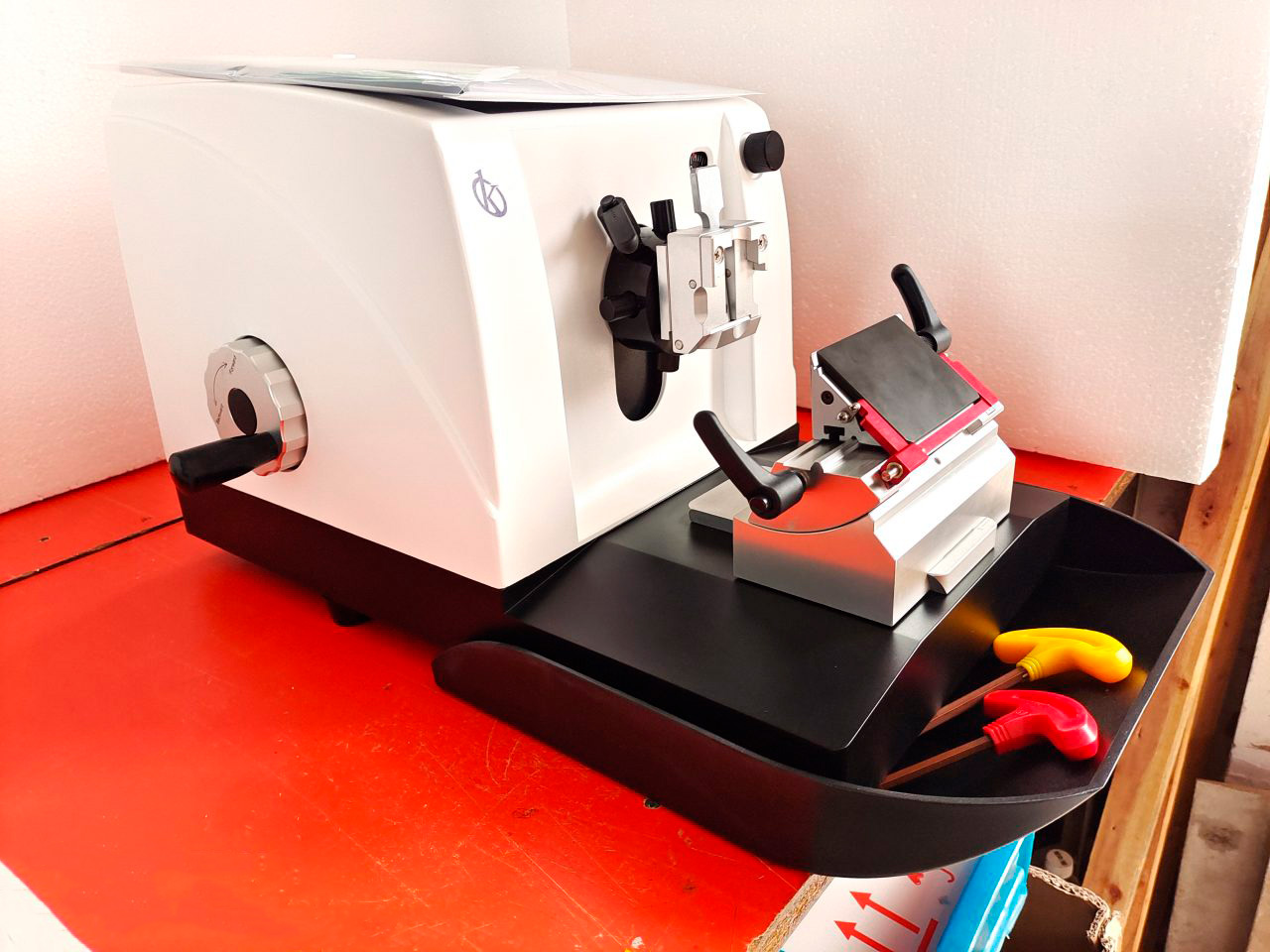Microtomy is the discipline that deals with obtaining fine serial sections from tissues included in paraffin blocks for their subsequent study under optical and / or electronic microscopy, which makes it one of the basic pillars of procedural techniques of Pathological anatomy. The microtome is a mechanical device that allows obtaining micrometer-thick tissue sections that can be used later for microscopic study. These devices use steel, glass or diamond blades, depending on the type of sample being sliced and the desired thickness of the cut sections.
History of the microtome
The history of microtomes began with the beginning of light microscopes. In order to analyze objects, they had to be fine enough for light to pass through. The first microtomes were originally simple blades (usually razor blades) with which cuts were made manually. As the demands on preparations were increasing, it was necessary for microtomes to be developed. The first microtomes, as we know them today, were developed in 1770. With these you could fix the test and adjust the thickness of the cut using screws.
Today, mechanical microtomes are made up of a block, a sample holder and a technical equipment for the control of the advance. The quality of the preparations depends on the type of feed, the geometry of the blade and the decline. Additionally, the result can be influenced in the preparation of the sample. In addition to mechanical microtomes, laser microtomes are increasingly used today, with which it is possible to prepare samples without contact.
What’s your objective?
Microtomes are devices that allow very fine cuts to tissues that are generally previously hardened by methods such as freezing, insertion in paraffin or in celloidin. The microtomes have a micrometric wheel that sets the precision and thickness of the blades, which will define the sections or cuts.
What kind of blades does a microtome have?
The blades used by microtomes can be made of three types of materials, which depend on the need that the laboratory needs to cover and the fineness of the cut required by the sections.
Steel blades
The microtome steel blades are special for cutting soft tissue sections of animals and / or plants. The steel blades can be used in histology, cork, wood and expanded polystyrene for light microscopy.
Glass blades
Glass microtome blades are ideal for removing very thin sections for light and electron microscopy.
Diamond blades
The diamond blades for microtomes are generally used in industries, as they are used for fine cuts of hard materials such as bones, teeth and vegetable matter such as hard woods, as they are also ideal for light and electronic microscopy.
Types of microtome
In laboratories, microtomes can be classified into different categories, and each of these will be focused on the specific need to be covered:
- Semi-automatic microtomes.
- Automatic microtomes.
- Cryostats or Freezing Microtome.
- Ultramicrotome.
- Slide microtome.
- Oscillation microtome.
- Universal Rotation Microtome.
- Rotating microtomes.
- Manual rotary microtomes.
At Kalstein we have a wide range of microtomes, which we put at your disposal. That is why we invite you to take a look at the “Products” menu. HERE

